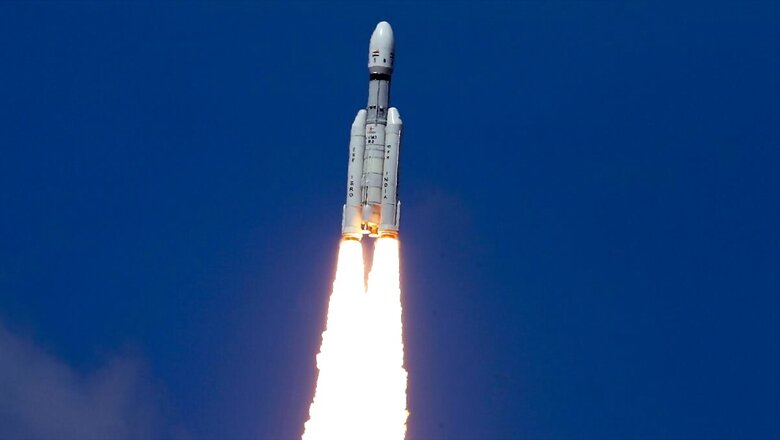
views
In an update on Saturday, ISRO stated that the Chandrayaan-3 mission is progressing smoothly, with the spacecraft’s health reported as normal. The first orbit-raising maneuver (Earthbound firing-1) was successfully executed from ISRO Telemetry, Tracking, and Command Network (ISTRAC) in Bengaluru. Currently, the spacecraft in an orbit that ranges from a closest distance to Earth of 173 km to a farthest distance of 41,762 km.
ISRO on Friday successfully launched its third edition of the Moon exploration programme from the Satish Dhawan Space Centre in Sriharikota.
“Chandrayaan-3 Mission update: The spacecraft’s health is normal. The first orbit raising manoeuvre (Earthbound firing-1) was successfully performed at ISTRAC/ISRO, Bengaluru. Spacecraft is now in 41762kms x 173kms orbit,” ISRO said in a tweet.
Chandrayaan-3 Mission update:The spacecraft's health is normal.The first orbit-raising maneuver (Earthbound firing-1) is successfully performed at ISTRAC/ISRO, Bengaluru.
Spacecraft is now in 41762 km x 173 km orbit. pic.twitter.com/4gCcRfmYb4
— ISRO (@isro) July 15, 2023
Scientists at the Indian Space Research Organisation in Bengaluru had planned to activate the onboard thrusters of Chandrayaan-3 on Saturday. This maneuver aimed to propel the spacecraft on a crucial 41-day trajectory away from Earth, ultimately leading to a significant objective: achieving a soft landing at the Moon’s south pole on August 23.
According to S Unnikrishnan Nair, the Director of Vikram Sarabhai Space Centre, the launch vehicle performed “extremely well” and theinitial conditions required for Chandrayaan-3 have been provided “very precisely”.
Nair explained that as the first phase of the experiment achieved a one hundred per cent success rate, the spacecraft itself is in excellent condition and possesses the capability to autonomously journey to the Moon, utilising its propulsion system and onboard logic.
Following the launch, Chandrayaan-3 Project Director P Veeramuthuvel stated on Friday that ISRO would maintain close monitoring and control of the spacecraft from the ISTRAC.
After the successful launch on Friday, ISRO Chairman S Somanath expressed that the days ahead would be “hectic”. As per the scheduled plan, the translunar injection is set to occur on August 1, followed by four Earth-bound manoeuvres. Subsequently, the lunar injection will take place.
Somanath further outlined the timeline, stating that the propulsion module-lander module separation is scheduled for August 17, while the final descent is currently planned for August 23 at 5.47 pm.




















Comments
0 comment